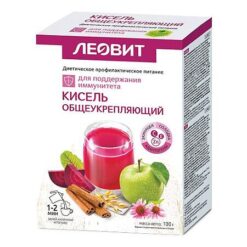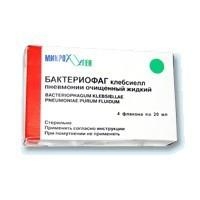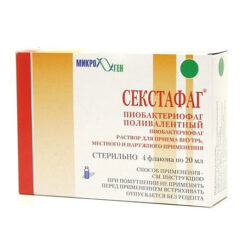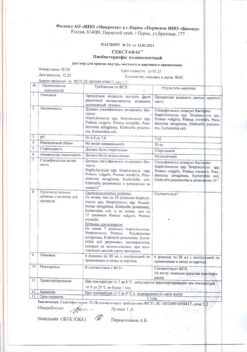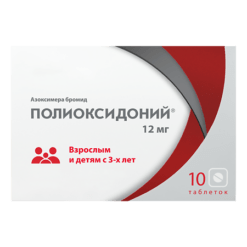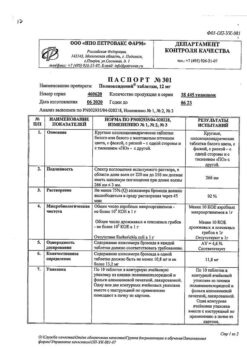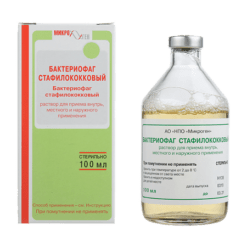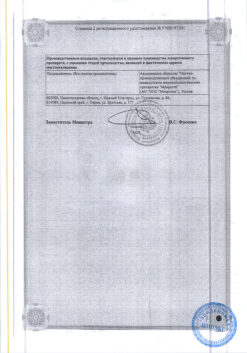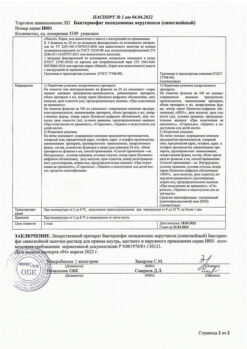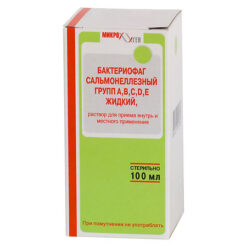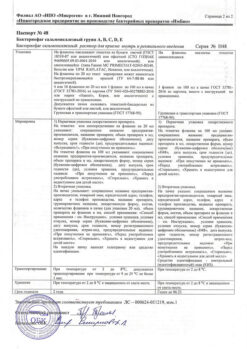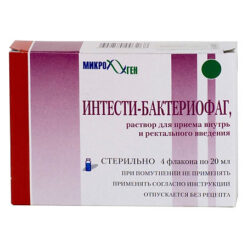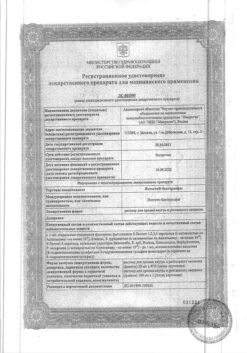No products in the cart.
Tuls, 80 mg/ml 1 ml
€1.00
Out of stock
(E-mail when Stock is available)
Description
Pharmacodynamics
. Ixekizumab is a humanized monoclonal antibody to the cytokine interleukin 17A (IL-17A and IL-17A/F) of immunoglobulin subclass G4 (IgG4). Increased IL-17A concentration is involved in the pathogenesis of psoriasis through stimulation of keratinocyte proliferation and stimulation as well as in the pathogenesis of psoriatic arthritis, ankylosing spondylitis, and neuropathic spondyloarthritis through inflammation, which leads to erosive bone tissue lesions and pathological new bone formation. Ixekizumab selectively binds to IL-17A and suppresses its action by neutralizing its activity. Ixekizumab does not bind to IL-17B, IL-17C, IL-17D, IL-17E and IL-17F ligands.
In in vitro studies, Ixekizumab has been shown not to bind to human Fcγ receptor I, IIa and IIIa or the C1q component of complement.
Ixekizumab modulates biological responses that are induced or regulated by IL-17A. Skin biopsy results of psoriasis patients from the phase I study show a dose-dependent trend toward a decrease in epidermal thickness as well as a decrease in the number of proliferating keratinocytes, T-lymphocytes, dendritic cells and local inflammatory markers relative to baseline values by day 43 of follow-up. As a consequence, ixekizumab therapy reduced redness, thickening and flaking of the skin in areas affected by plaque psoriasis.
In the first week of Talstm use, a decrease in levels of C-reactive protein (CRP), a marker of inflammation, has been demonstrated.
Plaque psoriasis
The use of Talstm in patients with plaque psoriasis provides significant skin clearance compared to placebo and etanercept with maximal effect by 12 weeks. After the first week, there was a significant reduction in itching in patients treated with Talstm. The efficacy and safety of Tulsetm have been demonstrated regardless of age, gender, race, body weight, baseline psoriasis severity index, plaque location, concomitant psoriatic arthritis and previous therapy with biological drugs. The drug showed efficacy in patients previously not receiving systemic therapy, in patients not receiving therapy with biological agents, in patients receiving therapy with biological agents/tumor necrosis factor (TNF) inhibitors, and in patients with no effect from the use of biological agents/tumor necrosis factor inhibitors.
Talstm has also been shown to be effective for nail psoriasis, scalp psoriasis and plantar psoriasis. The use of Talstm was associated with a significant improvement in patients’ quality of life. A statistically significant reduction in itching was observed in all studies.
A high proportion of patients treated with Tulsetm had a reduction in the severity of genital pain, genital itching, the impact of genital psoriasis on sexual activity and the skin disease quality of life index.
Psoriatic arthritis
Patients with psoriatic arthritis on therapy with Talstm showed a significant decrease in disease activity. Similar clinical responses were observed in patients with psoriatic arthritis regardless of concomitant administration of basal anti-inflammatory drugs (BARDs) including methotrexate. The efficacy and safety of Talstm have been demonstrated regardless of age, gender, race, disease duration, baseline body weight, baseline psoriatic lesion area, baseline CRP level, baseline disease activity, concomitant corticosteroid administration and previous biological drug therapy. Talstm demonstrated efficacy in patients treated with biologics, in patients not treated with biologics, and in patients with no response to biologics.
The radiological signs of suppression of the progression of joint damage were noted at 24 weeks of therapy. There was a significant improvement in physical function and quality of life compared to patients taking placebo.
Ankylosing spondylitis
The use of Tulstm in patients with ankylosing spondylitis resulted in a marked reduction in disease activity compared to placebo use at 16 weeks of therapy. Clinical responses were similar in patients regardless of concomitant therapy. In patients who received ixekizumab after prior therapy with one or two TNF inhibitors, clinical response was observed regardless of the number of prior TNF inhibitors.
A similar clinical response was observed in patients regardless of baseline CRP levels, disease activity index, and spinal magnetic resonance imaging score. The efficacy of Talstm in treating ankylosing spondylitis was demonstrated regardless of age, gender, race, disease duration, baseline body weight, baseline Batsky index of functional impairment in ankylosing spondylitis and prior biological drug therapy.
There were statistically significant improvements in back pain (as early as week 1) and fatigue (as early as week 8).
Near axial spondyloarthritis
The use of Talstm in patients with axial spondyloarthritis resulted in a marked reduction in disease activity compared to placebo use at 16 weeks of therapy. Patients taking Talstm showed improvement in general condition and quality of life compared to placebo. There was a statistically significant improvement in back pain as early as week 1.
Pharmacokinetics
absorption
. After a single subcutaneous injection in psoriasis patients with ixekizumab at doses ranging from 5 to 160 mg, the mean maximum concentration of the drug was reached between day 4 and 7 after initiation of therapy. The mean maximum plasma concentration (Cmax) of ixekizumab after the initial 160 mg dose was 19.9 mcg/ml.
After an initial dose of 160 mg, equilibrium was reached by week 8 with a regimen of 80 mg once every 2 weeks. The mean values of the maximum equilibrium concentration (Cmax, ss) and minimum equilibrium concentration (Cthrough, ss) were 21.5 µg/mL and 5.23 µg/mL, respectively.
After switching from an 80 mg once every 2 weeks for 12 weeks to an 80 mg once every 4 weeks regimen, equilibrium was reached after approximately 10 weeks. The mean values of Cmax, ss and Cthrough,ss were 14.6 μg/mL and 1.87 μg/mL, respectively.
The bioavailability of ixekizumab by subcutaneous injection averaged between 54 and 90%. The average bioavailability of ixekizumab when administered subcutaneously in patients with psoriatic arthritis was 61% to 84%.
Distribution
The mean total distribution in equilibrium was 7.11 liters based on population pharmacokinetic analysis.
Metabolism
As icecizumab is a monoclonal antibody, it is expected, like endogenous immunoglobulins, to be cleaved into small peptides and amino acids via the catabolic pathway.
Elimation
According to population pharmacokinetic analysis, the average serum clearance was 0.0161 L/hour. Clearance was independent of the drug dose. In patients with plaque psoriasis the mean half-life calculated by population pharmacokinetic analysis is 13 days.
Linearity
The area under the concentration-time curve (AUC) for subcutaneous administration increased in proportion to the dose, ranging from 5 to 160 mg.
Pharmacokinetic properties in various drug indications
The pharmacokinetic parameters of ixekizumab were similar in patients with plaque psoriasis, psoriatic arthritis, ankylosing spondylitis, and neuentgenic axial spondyloarthritis.
Special patient groups
Elderly patients
. Based on population pharmacokinetic analysis, the clearance of ixekizumab was similar in patients 65 years of age or older and patients under 65 years of age.
Patients with impaired hepatic or renal function
There have been no studies examining the effects of hepatic or renal impairment on the pharmacokinetics of ixekizumab. Excretion of icecizumab unchanged by the kidneys is presumed to be minimal; similarly, since IgG monoclonal antibodies are eliminated primarily through intracellular catabolism, hepatic dysfunction is not expected to affect clearance of icecizumab.
Indications
Indications
Active ingredient
Active ingredient
Composition
Composition
1 ml of the drug contains:
acting substance: ixekizumab – 80 mg;
excipients: sodium citrate dihydrate – 5.11 mg, citric acid anhydrous – 0.51 mg, sodium chloride – 11.69 mg, polysorbate 80 – 0.30 mg, water for injection q.s. to 1 ml.
How to take, the dosage
How to take, the dosage
The use of Tulstm should be under the supervision of a physician experienced in the diagnosis and treatment of conditions for which Tulstm is indicated.
Tulstm is injected subcutaneously using a autoinjector. Each autoinjector is intended for single use. Before injecting the drug, visually evaluate the autoinjector for mechanical inclusions and discoloration of the solution. Do not use the drug if it is cloudy, has mechanical inclusions and/or changes in color to brown. Keep autoinjector away from direct light and heat. Do not freeze or shake the drug. Do not use if the product has been frozen.
The instructions in the Autoinjector Instruction Manual must be strictly followed.
After receiving training in hypodermic injection techniques, patients may inject Tulstm on their own if the physician deems it possible. However, the physician should properly monitor the patient’s condition.
It is recommended to alternate injection sites. If possible, areas of skin affected by psoriasis should be avoided as injection sites.
Plaque psoriasis
On the first day of treatment, the drug is given in a dose of 160 mg (two injections of 80 mg each). The next injection is made after 2 weeks: one injection at a dose of 80 mg. Subsequently, the drug is injected once every 2 weeks in a dose of 80 mg in 4, 6, 8, 10 and 12 weeks after the first injection. After 12 weeks of treatment, administration of 80 mg (one injection) every 4 weeks is recommended as maintenance therapy.
Psoriatic arthritis
On the first day of treatment, the drug is given in a dose of 160 mg (two injections of 80 mg each). Four weeks after the first injection, the drug is administered once every four weeks in a dose of 80 mg (one injection). In patients with concomitant moderate to severe psoriasis, the recommended dosing regimen is the same as for plaque psoriasis.
If there is no response to therapy with the drug after 16 to 20 weeks, consideration should be given to discontinuing the drug. However, some patients with an initial partial response may improve with continued therapy beyond 20 weeks.
Axial spondyloarthritis
Interaction
Interaction
The safety of Talstm in combination with other immunomodulatory agents or phototherapy has not been studied in clinical studies in patients with plaque psoriasis.
Cytochrome isoenzyme substrates P450
. The results of a study of drug interactions in patients with moderate to severe psoriasis showed that over 12 weeks of administration of ixekizumab with drugs metabolized by CYP3A4 enzymes (e.g, midazolam), CYP2C9 (e.g., warfarin), CYP2C19 (e.g., omeprazole), CYP1A2 (e.g., caffeine), or CYP2D6 (e.g., dextromethorphan) were shown to have no clinically significant effect on the pharmacokinetics of these drugs.
The drug interactions of Talstm with methotrexate and/or glucocorticoids were not found when used simultaneously in patients with psoriatic arthritis.
In patients with axial spondyloarthritis, the clearance of ixekizumab was not altered by concomitant use of oral corticosteroids, NSAIDs or traditional DAAs (e.g., sulfasalazine and methotrexate).
Special Instructions
Special Instructions
Infections
Talkstm therapy is associated with an increased incidence of infections such as upper respiratory tract infections, oral candidiasis, conjunctivitis and dermatophytic infections (see “Side effects”). See side effects).
The drug should be used with caution in patients with clinically significant, chronic infections. If there are signs of infection, close monitoring of the patient’s condition is necessary. If there is no response to standard therapy or if the course of infection is complicated, therapy with Tulsetm should be discontinued until the infection is resolved.
The therapy with Talstm is not recommended for patients with active tuberculosis. Patients with latent tuberculosis are recommended to take a standard course of anti-tuberculosis therapy before starting treatment with Tulsetm.
Hypersensitivity
. Serious hypersensitivity reactions including anaphylactic shock, angioedema, urticaria and, rarely, delayed, developing 10-14 days after injection, serious hypersensitivity reactions (including extensive urticaria, dyspnea, high antibody titers) have been reported. If serious hypersensitivity reactions occur, therapy with Talstm should be stopped immediately and appropriate therapy should be started.
Inflammatory bowel disease
There have been cases of development or exacerbation of Crohn’s disease and ulcerative colitis. Caution should be exercised when prescribing Talstm to patients with inflammatory bowel disease, including Crohn’s disease and ulcerative colitis, and close monitoring of these patients is necessary.
Immunizations
Immunizations with live and inactivated vaccines should not be performed simultaneously with therapy with Tulsetm. There are no data on the adequacy of immune response to live vaccines in patients using Tulsetm. There is insufficient data on the adequacy of the immune response to inactivated vaccines in patients using Tulsetm.
Associates
The drug contains less than 1 mmol of sodium (23 mg) per dose of 80 mg, which means it is effectively sodium-free.
Influence on driving and operating ability
Tulstm has no or negligible effect on driving and operating ability.
Synopsis
Synopsis
Contraindications
Contraindications
Cautions
Chronic and recurrent infectious diseases of viral, fungal or bacterial nature, malignant tumors in the history, patients with inflammatory bowel disease (see section “Special Indications”).
Side effects
Side effects
The most common adverse reactions are injection site reactions and upper respiratory tract infections (most commonly nasopharyngitis).
The adverse reactions identified during clinical trials and post-marketing use of the drug are listed according to the organ system classes presented in the Medical Dictionary for Regulatory Affairs (MedDRA). Within each organ system class, adverse reactions are categorized and presented by frequency of occurrence (starting with the most frequent) and severity (in descending order of severity): Very frequent (â¥1/10), frequent (â¥1/100 to < 1/10), infrequent (â¥1/1000 to < 1/100), rare (â¥1/10000 to < 1/1000), very rare (< 1/10000).
Infections and invasions
Very common: upper respiratory tract infections (including nasopharyngitis and upper respiratory tract infections).
Often: dermatophytic infections, herpes simplex (skin and mucous membranes), including oral herpes, herpes simplex, genital herpes, skin herpes and genital herpes simplex.
Infrequent: Flu-like reactions1, rhinitis1, oral candidiasis (or oral fungal infection), conjunctivitis1, cellulitis (including staphylococcal cellulitis, outer ear cellulitis, and horny inflammation).
1. – In patients treated with ixekizumab for plaque psoriasis, psoriatic arthritis, ankylosing spondylitis, and nerve axial spondyloarthritis in clinical trials, adverse reactions were similar, except for the frequency of flu-like reactions and conjunctivitis which were noted frequently in clinical studies in patients with psoriatic arthritis and neuentgenic axial spondyloarthritis, and rhinitis, which was noted frequently in clinical studies in patients with ankylosing spondylitis.
Blood and lymphatic system disorders
Infrequent: neutropenia (based on reports of adverse events), thrombocytopenia (based on reports of adverse events).
Immune system disorders
Infrequent: angioedema.
Rarely: anaphylactic shock (based on post-marketing experience of use).
Respiratory system, thorax and mediastinum disorders
Often: pain in the oropharynx.
Gastrointestinal tract disorders
Often: nausea.
Skin and subcutaneous tissue disorders
Infrequent: urticaria, rash, eczema.
General disorders and injection site reactions
Very common: injection site reactions (in studies in patients with plaque psoriasis more common in patients weighing less than 60 kg, in studies in patients with psoriatic arthritis more common in patients weighing less than 100 kg). The higher incidence of injection site reactions did not lead to an increased incidence of discontinuation of the drug.
Injection site reactions
The most common reactions observed at the injection site were erythema and pain. Most injection site reactions were rated as mild to moderate and did not require discontinuation of the drug.
Infections
. During the placebo-controlled clinical trial period (follow-up to 12 weeks), infections were detected in 27.2% of patients with plaque psoriasis treated with Talstm and 22.9% of patients treated with placebo.
The majority of infections were rated as mild to moderate and did not require discontinuation of the drug. Serious infections were reported in 0.6% of patients treated with Talstm and 0.4% of patients treated with placebo. During the entire treatment period, infections occurred in 52.8% of patients treated with Talstm. Serious infections occurred in 1.6% of patients treated with Tulsetm.
The incidence of infections was similar in clinical trials in patients with plaque psoriasis and psoriatic arthritis, except for the incidence of flu-like reactions and conjunctivitis, which were reported frequently in patients with psoriatic arthritis.
Laboratory findings: Neutropenia and thrombocytopenia
Neutropenia developed in 9% of patients with plaque psoriasis who received Talstm in clinical trials. In most cases, the neutrophil count was â¥1000/mm3 of blood. The severity of neutropenia may have been persistent, variable, or transient. In 0.1% of patients the neutrophil count was < 1000/mm3. In most cases, neutropenia did not require drug withdrawal. 3% of patients treated with Talstm had platelet count deviation from < 150,000/mm3 to ⥠75,000/mm3. The severity of thrombocytopenia may have persisted, changed, or been transient.
The incidence of neutropenia and thrombocytopenia was similar in clinical trials in patients with plaque psoriasis and psoriatic arthritis.
Immunogenicity
. Antibodies to ixekizumab were detected in 9-17% of patients with plaque psoriasis treated with Talstm according to the recommended dosing regimen. The titer of most antibodies was low and no decrease in clinical activity was observed with the duration of therapy up to 60 weeks. However, neutralizing antibodies to ixekizumab were detected in 1% of patients, which was associated with lower drug concentrations and decreased clinical response.
Ixekizumab antibodies were detected in 11% of patients with psoriatic arthritis treated with Talstm according to the recommended dosing regimen for up to 52 weeks of therapy. The titer of most antibodies was low, with neutralizing antibodies to ixekizumab detected in 8% of patients. There was no apparent relationship between the presence of neutralizing antibodies and the effect on drug concentration or efficacy.
Antibodies to ixekizumab were detected in 5.2% of patients with ankylosing spondylitis treated with Talstm according to the recommended dosing regimen for up to 16 weeks of therapy. The titer of most antibodies was low, with 1.5% of patients found to have neutralizing bodies to ixekizumab. Antibodies to ixekizumab were detected in 8.9% of patients with axial spondyloarthritis nervosa treated with Talstm according to the recommended dosing regimen at therapy durations up to 52 weeks, with low antibody titers. No neutralizing antibodies were detected. There was no apparent relationship between the presence of antibodies to ixekizumab and drug concentration, efficacy or safety.
There was no apparent relationship between immunogenicity and resulting adverse events for any of the drug indications.
Overdose
Overdose
Pregnancy use
Pregnancy use
Women of childbearing age should use effective contraception during therapy with Tulsetm and for at least 10 weeks after the last dose of ixekizumab.
Pregnancy
There are limited data on the use of ixekizumab in pregnant women. Animal studies have shown no direct or indirect adverse effects on pregnancy, fetal development, delivery or postnatal development. As a precautionary measure, the use of Talstm is not recommended during pregnancy.
Breastfeeding
It is not known whether ixekizumab is excreted into breast milk or absorbed into the gastrointestinal tract of the newborn. Data from animal studies indicated the presence of ixekizumab in small amounts in the milk of female Javanese macaques. When deciding whether to interrupt breastfeeding or discontinue ixekizumab therapy, the benefit to the baby from breastfeeding and the benefit to the mother from continued therapy should be considered.
Fertility
The data on the effect of ixekizumab on human fertility have not been studied. Animal studies have found no direct or indirect adverse effects on fertility.
Additional information
| Shelf life | 2 years. Do not use after the expiration date stated on the package. |
|---|---|
| Conditions of storage | In a light-protected place at a temperature of 2 to 8 ° C. Do not freeze or shake. Do not use if the product has been frozen. The product may be stored outside the refrigerator for up to 5 days at a temperature not exceeding 30 °C. Store in places out of the reach of children. |
| Manufacturer | Lilly del Caribe Inc., Puerto Rico |
| Medication form | solution |
| Brand | Lilly del Caribe Inc. |
Related products
Buy Tuls, 80 mg/ml 1 ml with delivery to USA, UK, Europe and over 120 other countries.


